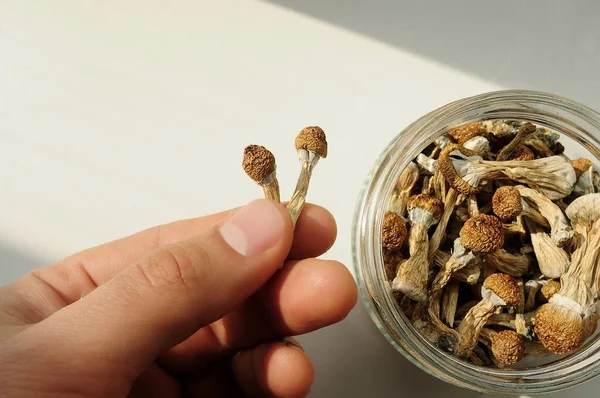
The discovery and use of magic mushrooms (mushrooms containing psilocybin) cannot be attributed to a single individual. These mushrooms have a long history of use on all four corners of the globe — many cultures have employed them for religious, spiritual, and shamanic purposes for thousands of years.
Nobody knows for sure who or which culture first decided to munch on psilocybin-containing mushrooms — one theory even suggests humanity evolved as a direct byproduct of earlier primates eating them as a source of food (called the stoned ape theory).
While it’s unclear who truly discovered these mushrooms, we do know who first publicized them in the West — an anthropologist named Richard Evan Shultes.
The Ancient History of Magic Mushroom Use
Psychedelic plants and fungi have been used for thousands of years to reach higher states of consciousness, connect with the gods, form deeper connections to nature, and heal the mind, body, and soul.
Some scientists believe that shroom consumption has been a practice dating back to the development of our cognitive capacities when we became “evolutionary distinct.” This assumption is based on observations of other species, such as dolphins, reindeer, bighorn sheep, and jaguars, that actively seek out and ingest psychedelic substances.
Mushrooms in the genus Psilocybe are not only common, but they’re widespread and found on every continent inhabited by humans. It’s unlikely that early humans managed to avoid shrooms; they probably incorporated magic mushrooms into their diets.
Renowned ethnobotanist and psychonaut Terence McKenna went a step further, suggesting that the consumption of these mushrooms may have catalyzed human evolution.
McKenna’s “Stoned Ape” theory proposed that psilocybin ingestion induced a heightened state of interconnectivity within the neural networks of early humans. This potentially led to an expansion in brain size, fostering the development of innovative technologies and serving as a catalyst for the emergence of concepts like religion and language.
Prehistoric Humans & Magic Mushroom Use
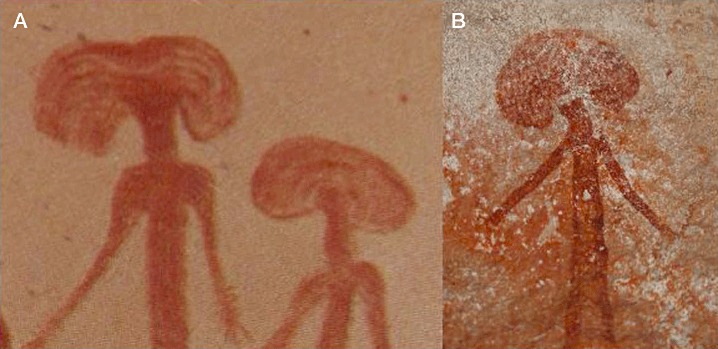
It’s believed psilocybin mushrooms have been used spiritually and medicinally for over 12,000 years. Although evidence of mushroom use this far back is lacking, a series of stone paintings discovered in the Kimberley region of Australia can be interpreted as a symbol of psilocybin use.
The “Bradshaw rock art” is a series of paintings spread across 100,000 sites in an area of 50,000 square kilometers (around 12.4 million acres) that are believed to be at least 12,000 years old . Several of these ancient artworks feature “the mushroom head” — a symbol that many scientists interpret as a symbol of magic mushroom use .
The symbols found in the Bradshaw Rock Art of Kimberley are open to interpretation. Although several researchers believe that the depictions of mushrooms could detail the ancient peoples’ consumption of psychedelic mushrooms, we can’t be 100% sure. However, there’s more substantial evidence supporting the use of psilocybin mushrooms in later cultures from 1500 BCE onwards.
Ancient Civilizations & Magic Mushroom Use
Magic mushrooms have a long history of use among indigenous cultures, especially in Mesoamerica (Mexico and Central America), where the people used species like Psilocybe mexicana and Psilocybe cubensis for their psychoactive effects.
Archaeological evidence suggests that these mushrooms were a part of rituals and spiritual ceremonies dating back to ancient civilizations such as the Mayans and Aztecs. These cultures regarded psilocybin mushrooms as sacred and integral to their religious practices.
1. The Mayan Civilization
The Mayans, who thrived in (present-day) Mexico and Central America from approximately 1500 BCE to 1500 CE, left behind inscriptions and artwork that provide an in-depth insight into their use of magic mushrooms. They believed that consuming these mushrooms allowed them to communicate with the divine and access spiritual realms.

Some of the Mayans’ most famous mushroom relics are known as the “mushroom stones.” These phallic-shaped sculptures feature a variety of different faces, all crowned with mushroom-shaped caps. They are believed to have played a role in religious ceremonies where shrooms were consumed [3].
The Maya were avid users of psychedelic plants and fungi. They had an advanced knowledge of the natural world around them and regularly incorporated psychoactive substances into religious ceremonies, medical practices, and general daily life.
Plants and fungi such as peyote (Lophophora williamsii), magic mushrooms (Psilocybe spp.), the seeds of ololiuqui (Turbina corymbosa), Jimson weed (Datura stramonium), wild tobacco (Nicotiana rustica), and Salvia divinorum have been observed as illustrations on Mayan stone carvings and other artifacts .
2. The Aztec Civilization
The Aztecs — a later Mesoamerican civilization that existed from the 13th to the 16th century — incorporated magic mushrooms into their religious ceremonies. In Aztec culture, the mushrooms were associated with the god Xochipilli — “the Prince of Flowers and patron of art, games, beauty, and love.”
Psilocybin mushrooms — likely Psilocybe mexicana and perhaps Psilocybe cubensis — were known as “teonanácatl,” meaning “Flesh of the Gods.” The Aztecs also used a variety of other psychoactive plants to help contact the gods and achieve a trance-like state of consciousness.
Who Was the First Westerner to Discover Magic Mushrooms?
Robert Gordan Wasson is often credited as “the first Westerner to discover magic mushrooms.” However, this isn’t entirely true.
Although R. Gordan Wasson did introduce psilocybin-containing mushrooms to the public eye of the West, other researchers of the time were also studying hallucinogenic fungi. Wasson didn’t stumble across magic mushrooms by chance; he was “tipped off” by another legend in psychedelics — Richard Evan Shultes.
Schultes was an ethnobotanist of the time who presented Robert Gordan Wasson with evidence of a “mushroom cult” in Mexico. He sent Wasson a letter that explained that he’d witnessed a shamanic ritual where psychedelic fungi were used to induce a trance-like state. He slipped a sample of the mysterious fungi in the letter — a species now known as Psilocybe mexicana.
This letter was a major catalyst in the psychedelic revolution of the ’60s. It led to the West’s introduction to psychedelic shrooms and the discovery of psilocybin — the active component in magic mushrooms.
Including Schultes and Wasson, there are four key figures responsible for the “discovery” of magic mushrooms in modern times. Let me introduce you to them.
1. Richard Evan Schultes — The Westerner Who Discovered Psychedelic Shrooms
Richard Evan Schultes (1905–2001) is known as the father of “ethnobotany” — the study of the traditional knowledge of people and cultures concerning plants and their medical, religious, and spiritual uses.
Schultes was one of the most famous and well-regarded explorers of the Amazon rainforest from the 20th century. He was the first Westerner to study ayahuasca and its uses in the Amazon, the first to discover what the Aztecs called “teonanácatl” (Flesh of the Gods), and one of the key figures in the discovery of psilocybin.
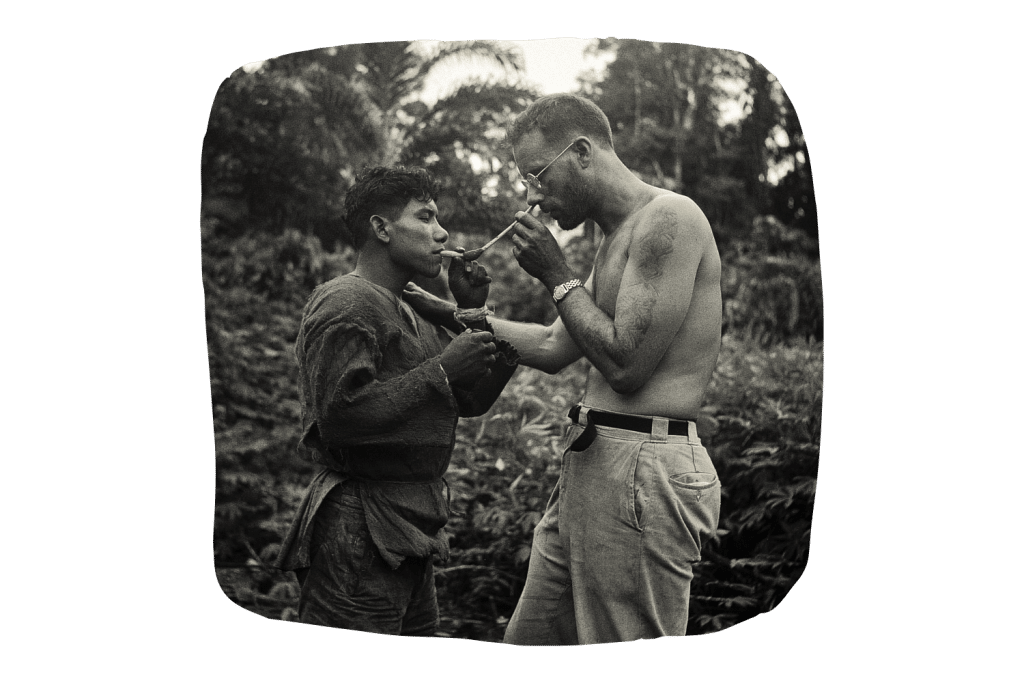
Here’s what he wrote:
“Shortly after ingestion of the mushrooms, the subject experiences a general feeling of levity and well-being. This exhilaration is followed within an hour by hilarity, incoherent talking, uncontrolled emotional outbursts, and, in the later stages of intoxication by fantastic visions in brilliant colors, similar to the visions so often reported for the narcotic peyote.”
It was Richard Evan Schultes’ encounters with these sacred mushrooms that marked the beginning of a new era. Schulte’s paper on teonanácatl set the wheels in motion for the train that was the psychedelic revolution — this is where Robert Gordan Wasson comes in…
2. Robert Gordan Wasson: The Man Who Brought Magical Shrooms to the West
Robert Gordan Wasson is known by many as the godfather of the psychedelic revolution. He’s the man who introduced the Western world to magic mushrooms — without him, who knows how long it would’ve taken for psilocybin to reach the West.
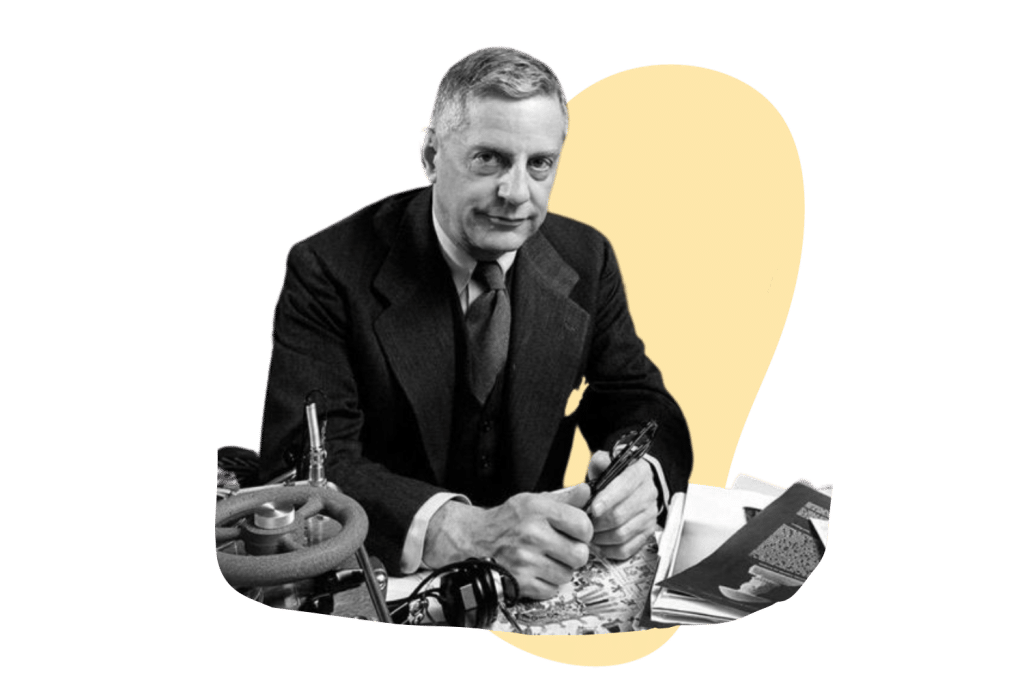
Wasson Begins His Research Into Magic Mushrooms
Robert Gordan Wason and his wife Valentina had been embarking on mushroom-hunting adventures for several years before they stumbled across psilocybin-containing mushrooms. They had traveled across Friesland, Lapland, Provence, and Basque Country in search of mushrooms and their cultural significance.
The couple had gathered a substantial amount of information on mushrooms over the years — enough to publish a book. While preparing and organizing the material for publishing, Wasson realized how many references he had to mushrooms in religion. This made him question whether ancient cultures worshiped mushrooms — this would explain their prevalence in religious artifacts and texts.
Robert and Valentina Wasson decided to continue their mushroom-hunting adventures with a different purpose — to explore the religious significance of mushrooms.
They searched for specific mushrooms that cultures across the globe would consume — from India to the Americas and Europe to China. They discovered references to psychedelic mushrooms in the form of text and stone carvings from Greek and Guatemalan cultures. However, the turning point of their research came in the form of a letter.
Richard Evan Schultes caught wind of the Wasson’s ongoing study, so he presented them with evidence of a “mushroom cult” in the Oaxaca region of Mexico. Schultes sent Robert Gordan Wasson a letter detailing his experiences in Huautla de Jiménez — he even placed a sample of the sacred mushroom Wasson was searching for.
Robert Gordan Wasson: “Seeking the Magic Mushroom”
After receiving the letter from Richard Evan Schultes, Wasson went in search of the mushroom cult in Huautla de Jiménez. Upon arrival, he met a woman called Maria Sabina — a curandera (healer) who used psychedelic mushrooms in her “mushroom ceremonies.”
Robert and Valentina spent most of their time in Huautla de Jiménez from 1953 to 1954, collecting samples of psychedelic mushrooms such as Psilocybe mexicana and P. cubensis, as well as partaking in several mushroom ceremonies with Maria Sabina.
3. Maria Sabina: The Mother of Mushrooms
Maria Sabina (1894–1985), “the mother of mushrooms,” was the curandera (medicine woman) who introduced Robert Gordan Wasson to her niños santos (Sacred Children) — magic mushrooms.
She would collect several different types of psilocybin mushrooms from the mountains that surrounded her village. Psilocybe caerulescens, Psilocybe mexicana, and Psilocybe cubensis were commonly used in her mushroom ceremonies for physical and spiritual healing.
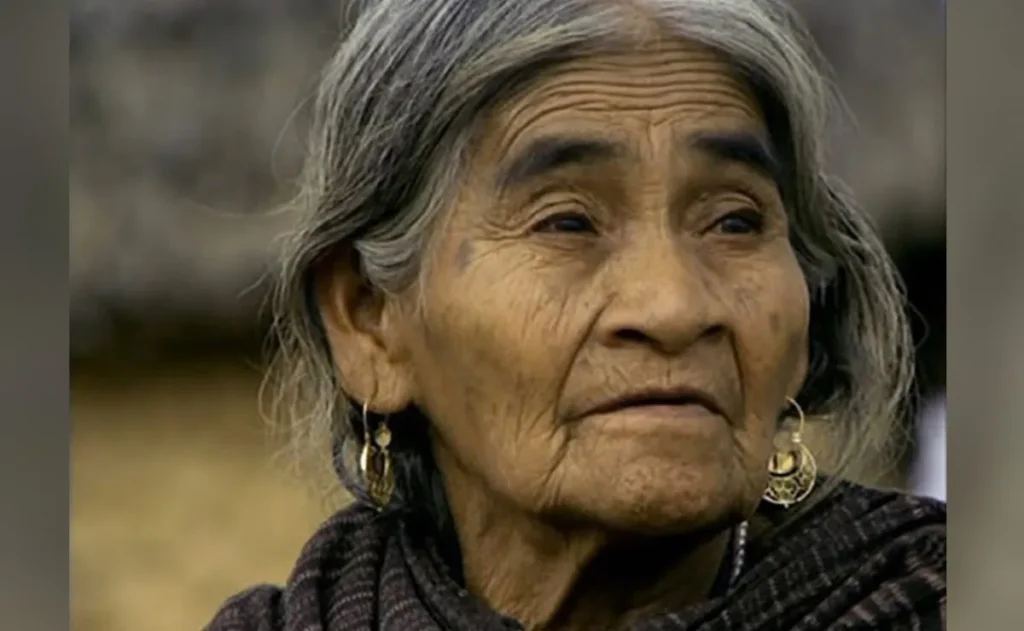
Maria Sabina had a vast knowledge of the plants and fungi that inhabited the landscape around Huautla de Jiménez. She was a humble, kind-natured woman who didn’t hesitate to share her knowledge and magic mushrooms with Robert Gordan Wasson.
Unfortunately, Maria Sabina’s kind and sharing nature would eventually lead to her demise. She was partly responsible for the introduction of magic mushrooms to the West, and Wasson’s stories of her and her mushroom ceremonies inspired hundreds of thousands of people to try psychedelics.
4. Albert Hofmann: The Person To Discover & Synthesize Psilocybin
Albert Hofmann is the Swiss scientist who’s most famous for being the first person to synthesize LSD (lysergic acid diethylamide). However, he also played a part in the discovery of psilocybin and psilocin — the active psychedelic compounds that make magic mushrooms “magic.”
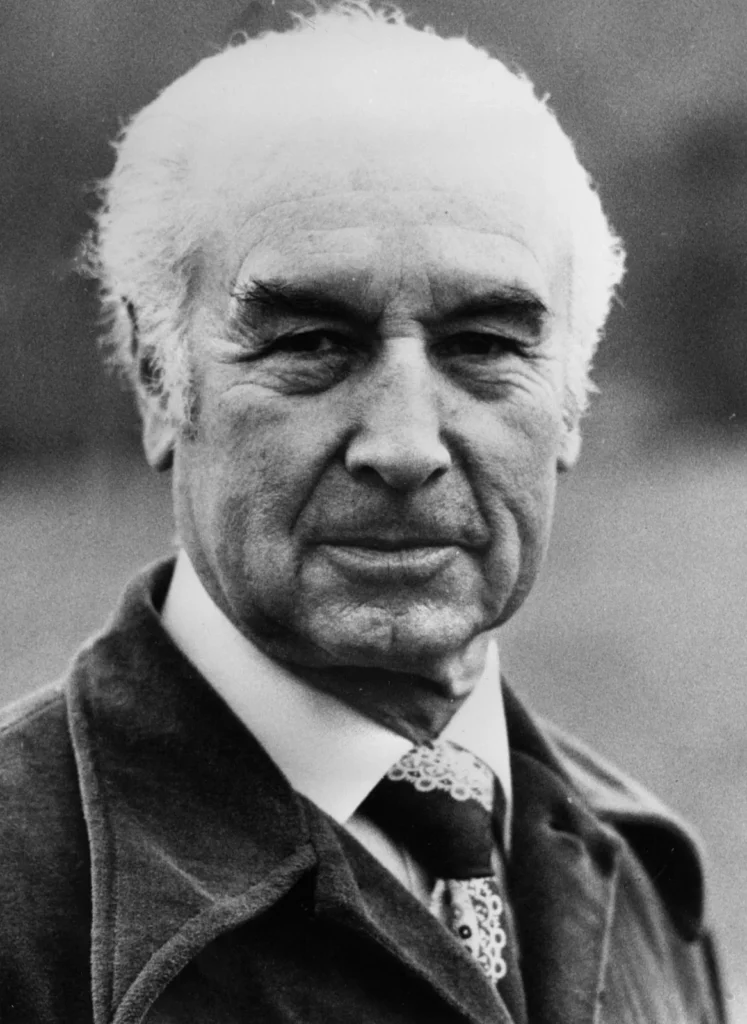
In 1958, Albert Hofmann isolated and identified psilocybin and its metabolite psilocin as the compound(s) responsible for the species’ psychedelic effects — from a selection of Psilocybe mexicana samples that Robert Gordan Wasson sent him. Later, in 1963, Albert Hofmann and fellow Swiss chemist Franz Troxler reported the synthesis of psilocybin in a patent .
Although Albert Hofmann seemingly played a small role in the discovery of magic mushrooms and their introduction to the West, his discovery of psilocybin was extremely important. Hofmann’s discovery paved the way for research into the effects of psilocybin and the potential benefits of magic mushrooms.



